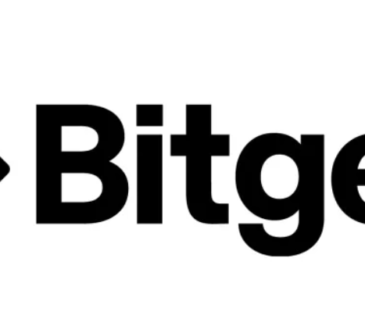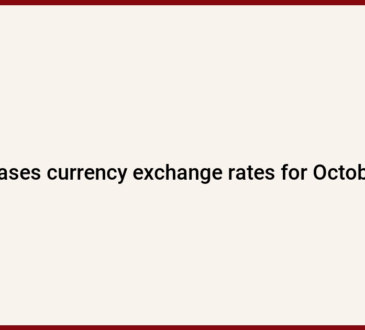We recently compiled a list of the 7 Best Digital Currency and Payments Stocks To Buy Now. In this article, we are going to take a look at where Block, Inc. (NYSE:SQ) stands against the other digital currency and payment stocks.
Digital currencies, particularly Central Bank Digital Currencies (CBDCs), are revolutionizing the way payment systems operate, drawing significant interest from governments and institutions worldwide. Unlike traditional currencies, CBDCs are digital versions of a nation’s currency issued and regulated by central banks, offering the potential to enhance the efficiency of payment transactions, reduce costs, and accelerate settlement times. These digital currencies utilize distributed ledger technology or a central database, ensuring that every transaction is recorded, providing a transparent and secure system.
Over the past decade, CBDCs have gained traction as a solution to improve cross-border payments, a key area where traditional banking systems often fall short due to high costs, lengthy processing times, and complex intermediaries. CBDCs aim to streamline these processes by reducing payment chains and facilitating faster, more efficient transactions between countries. For example, countries like the Bahamas and China have already launched their own CBDCs, with several others, including the United States, actively piloting or researching their implementation.
These initiatives are not only focused on enhancing wholesale cross-border interbank transactions but also on retail CBDCs, which could significantly improve financial inclusion by making financial services more accessible to the general public. However, the adoption of CBDCs is not without challenges. There are concerns about the potential impact on the stability of financial systems, particularly regarding the roles of financial intermediaries, which could be drastically altered or diminished. Additionally, issues related to privacy, security, and the need for robust regulatory frameworks remain critical as governments explore the broader implementation of CBDCs.
As global interest in digital currencies continues to grow, CBDCs are positioned to play a pivotal role in reshaping the global payments landscape, offering a promising future for faster, more efficient, and inclusive financial systems. McKinsey’s 2023 Digital Payments Consumer Survey reveals that digital payments have become deeply ingrained in consumer behavior, with over 90% of respondents using digital payment methods within the past year. The survey shows that online purchasing remains the most popular form of digital payment, while in-app and in-store payments are growing, particularly among younger consumers. Notably, the trend toward consolidating digital wallets has intensified, with a significant drop in the number of consumers using multiple wallets. Security and trust are critical factors in wallet selection, with many consumers now favoring providers with robust security measures.
The global digital payment market is poised for remarkable growth, with projections indicating it will reach $361.3 billion by 2030, expanding at a compound annual growth rate (CAGR) of 21.1% from 2024 to 2030 (according to industry data by Research and Markets). This rapid expansion is largely fueled by the increasing shift toward non-cash transactions, driven by both consumer preference and the technological advancements occurring within the financial technology (fintech) sector. As consumer behaviors evolve, fintech companies and traditional banks are under pressure to enhance and innovate their digital services to keep up with these changes. The market is also seeing significant contributions from the adoption of biometric authentication methods, such as facial recognition and fingerprint scanning. According to Payments Industry Intelligence, these advanced security measures are expected to protect an estimated $2.5 trillion in mobile payment transactions by 2024, underscoring the critical role of security in the digital payments landscape.
Within this growing market, several segments are expected to maintain or achieve dominance due to various factors. The payment processing segment, for example, is anticipated to retain its leadership position throughout the forecast period. This is largely due to the widespread introduction and expansion of payment networks like Mastercard, Visa, and Rupay across multiple countries, which are helping to drive growth in this area. Additionally, the point-of-sale (POS) segment, which dominated the market in 2023, is projected to experience substantial growth. This growth is being driven by the increasing preference for digital wallets, particularly for e-commerce transactions and online purchases, as consumers seek more convenient and secure payment options.
On-premise deployment of digital payment solutions continues to be a popular choice, especially among large enterprises that require secure and efficient transaction processing. These companies are increasingly adopting digital payment systems to streamline their operations, enhance the visibility of transactions, and improve the overall customer experience by reducing the time required to complete payments.
Geographically, the Asia-Pacific region is expected to witness significant growth from 2024 to 2030, with a notable increase in the adoption of digital payment solutions in emerging economies such as China and India. This regional growth is likely to create new opportunities in the market as these economies continue to embrace digital technologies and move away from traditional cash-based transactions. The banking, financial services, and insurance (BFSI) sector, in particular, is expected to play a crucial role in driving the market’s expansion, as the continued digitalization of banks and financial institutions enhances the adoption of digital payment methods. This trend is not only fostering growth within the region but is also contributing to the global shift towards a more digitally-driven economy.
For investors looking to capitalize on this rapidly expanding sector, the article offers insights into some of the top-performing stocks in the digital currency and payments space.
Our Methodology
We started off our list by compiling a list of all companies that offer digital payments by sifting through ETFs, running screens on Finviz, and reading articles published online. We compiled a list of 15 stocks and selected the 7 that were the most popular among elite hedge funds. The hedge fund sentiment was sourced from Insider Monkey’s database of over 900 hedge funds and is dated as of Q2 2024.
At Insider Monkey we are obsessed with the stocks that hedge funds pile into. The reason is simple: our research has shown that we can outperform the market by imitating the top stock picks of the best hedge funds. Our quarterly newsletter’s strategy selects 14 small-cap and large-cap stocks every quarter and has returned 275% since May 2014, beating its benchmark by 150 percentage points (see more details here).


People using the Cash App paying for goods and services, highlighting the impact the of the company’s payment tools.
Block, Inc. (NYSE:SQ)
Number of Hedge Fund Holders: 59
Block, Inc. (NYSE:SQ) holds the sixth spot on our list of seven best digital currency and payments stocks to buy now. Block, Inc. (NYSE:SQ) demonstrated a strong financial performance in Q2 2024, which underscores the company’s potential for continued growth and profitability. The company’s reported earnings per share (EPS) of $0.93 exceeded expectations of $0.829, reflecting the strength of its business model and operational efficiency. The company’s gross profit reached $2.23 billion, marking a 20% year-over-year increase. Cash App, one of Block, Inc. (NYSE:SQ) primary business segments, contributed $1.3 billion in gross profit, a 23% year-over-year rise, showcasing its growing user base and increased engagement through products like Cash App Card, Cash App Borrow, and buy now, pay later services. Square, another key segment, also performed well, generating $923 million in gross profit, up 15% year-over-year, driven by strength in software, integrated payments, and banking services.
Block, Inc. (NYSE:SQ) ability to generate substantial free cash flow is another positive indicator of its financial health. The company reported $1.43 billion in adjusted free cash flow for the 12 months ending in June 2024, more than doubling from the prior year. This robust cash flow has enabled Block to initiate a significant $3 billion share repurchase program, signaling confidence in its future prospects and a commitment to returning value to shareholders. Furthermore, Block, Inc. (NYSE:SQ) strategic shift to a functional organizational structure is expected to enhance collaboration across its ecosystems, improving efficiency and agility in executing growth initiatives. The company’s focus on deepening customer engagement through innovative financial products and expanding its market presence positions it well for sustained growth.
With a clear path toward achieving its long-term financial goals, including the Rule of 40 by 2026, Block, Inc. (NYSE:SQ) strong fundamentals and strategic initiatives make it a compelling investment opportunity in the digital payments and financial technology sector.
During Q2, 2024 the count of hedge funds holding positions in Block, Inc. (NYSE:SQ) fell to 59 from 65 in the prior quarter. These holdings collectively amounted to around $2.68 billion. Catherine D. Wood’s ARK Investment Management emerged as the leading shareholder among these hedge funds during this timeframe.
Baron FinTech Fund stated the following regarding Block, Inc. (NYSE:SQ) in its Q2 2024 investor letter:
“Block, Inc. (NYSE:SQ) provides point-of-sale technology to small businesses and operates the Cash App ecosystem of financial services for individuals. Shares gave back gains from earlier this year despite reporting strong quarterly results and raising full-year guidance. In the first quarter, gross profit grew 22% and EBITDA grew 91%, both exceeding Street expectations. Given the strong start to the year, second-quarter guidance of 16% to 17% gross profit growth may have disappointed some investors. Management remains committed to a “Rule of 40” investment framework in 2026 with at least mid-teens gross profit growth and a mid-20% operating margin. We continue to own the stock due to Block’s long runway for growth, durable competitive advantages, and innovative product offering.”
Overall SQ ranks 6th on our list of the best digital currency and payments stocks to buy. While we acknowledge the potential of SQ as an investment, our conviction lies in the belief that some AI stocks hold greater promise for delivering higher returns and doing so within a shorter timeframe. If you are looking for an AI stock that is more promising than SQ but that trades at less than 5 times its earnings, check out our report about the cheapest AI stock.
READ NEXT: $30 Trillion Opportunity: 15 Best Humanoid Robot Stocks to Buy According to Morgan Stanley and Jim Cramer Says NVIDIA ‘Has Become A Wasteland’.
Disclosure: None. This article is originally published at Insider Monkey.





